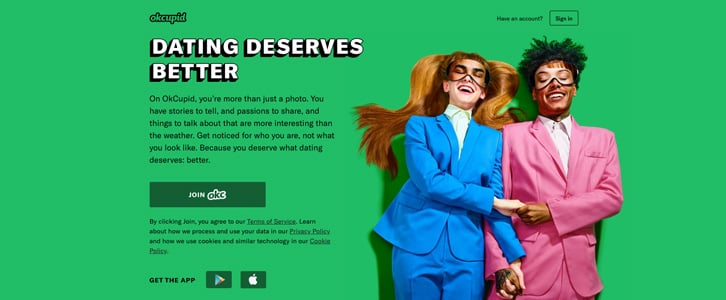
Personalisation is a marketing buzzword that has been around since the early 2000s—but very few, if any, marketers actually do it right. With so much legislation protecting consumer rights to privacy, marketers seem to be wary and hesitant to personalise the consumer experience when it comes to marketing.
This is for good reason—bad personalisation can come with unexpected costs that eat into its efficacy, and it can even turn customers away and tarnish a brand’s reputation. This blog post will explore why this is happening, what marketers can do to improve their personalisation, and give some examples of how personalisation can be done in an unobtrusive way.
The current state of personalisation
Today, you’d expect marketers to be succeeding at using personalisation because of the multitude of tools at their disposal. However, few are actually satisfied with the results. A 2017 CEB survey found that 59% of marketers were unsatisfied with their current personalisation technologies, and 74% of respondents said their returns so far were marginal at best.
On the consumer side of things, the data wasn’t any more optimistic. While 71% of consumers wanted personalised offers, 20% felt that the personalisation was poorly implemented, and a further 20% felt the personalisation efforts were too intrusive on their privacy.
However, this is not to say that consumers wanted to keep their information to themselves. A SAS research paper found that 57% of consumers expected companies to understand their needs and preferences, and 70% of younger consumers below the age of 40 actually demanded personalisation of websites and other real-time marketing.
It’s fairly obvious through the data that marketers are getting personalisation wrong—but that begs the question…
Why is this happening?
Going back to the data presented in the CEB survey, we can immediately see a problem with how marketers collect and utilise personalisation data.
-
76% of marketers stated that they collect demographic data, but only 47% actually use it, while only 8% use it in real-time.
-
66% of marketers collect purchase history data, but only 48% use it, with 11% using it in real-time.
-
Media consumption data is collected by 66% of marketers, but is only used 37% of the time, with 16% using the data in real-time.
-
52% of marketers collect brand engagement data, but only 30% use the data and 10% use it in real-time.
It seems that marketers simply don’t use the data that they collect about their consumers. However, when some of these marketers do use the data, they often encounter disastrous results. When CEB questioned 400 consumers and 400 marketers about personalised online ads that use details about consumer activities, 62% of marketers expected their marketing to be valued, and 31% expected a positive reaction about their brand.
Consumers didn’t agree. 49% were "creeped out" by the prospect, and 73% expressed negative sentiments, including words such as "hunted", "unsafe" and "worried". It seems that consumers want convenience and accuracy without willingly giving up any kind of information.
From this, we can conclude that there’s a very obvious disconnect with how marketers see and use personalisation vs what consumers want and expect from personalisation.
What can be done about it?
Consumers are reluctant to give up information, but still desire the convenience that personalisation often supplies. This gives marketer’s two possible approaches and two possible extremes.
The invisible approach
This school of thought believes that personalisation should be like good UX—undetectable because it works. From a consumer’s point of view, this kind of personalisation becomes visible only when it fails.
Data Collection
Marketers gunning for this approach should focus less on the sheer amount of data they can collect on each lead, and more on the quality of the data surrounding customer preferences, relevance and convenience.
Data collection for the invisible approach should be as unobtrusive and normative as possible, which means marketers should stick to the data that everyone collects, data that customers expect to be parted with as a matter of exchange.
Good places to start are your website, your point of sale and your email marketing data.
Implementation
It’s important to note that consumers will usually only notice invisible personalisation when the marketing becomes too personal—such as names, job title, industry, specific location and the sort.
It’s a good idea to create general profiles based on generalised data that can assist you in personalised marketing to the people that fit those profiles.
For example, you can create tiers of target profiles based on generalised data such as average order value, total revenue, time between orders, total orders, inclination to discounts and any other data that could easily be applied to large volumes of people.
Two Quick Examples of Great Invisible Personalisation
Online retailers like Amazon are a great example of invisible personalisation.
If you visit an Amazon page and browse a few items that interest you, as you continue to browse the site you’ll start seeing suggested items, ‘customers who viewed this also viewed..’ sections, and complimentary items.
Netflix is another example of great invisible personalisation. Netflix passively takes note of what each viewer watches and how often. It then recommends similar programmes and evaluates how accurate its last recommendation was. In addition to this, they openly ask the user to rate the programme they just watched which further assists their automated personalisation algorithms - which is a way is more transparent, adopting some aspects of our next approach.

The direct approach
The direct approach is the complete opposite of the invisible approach: it seeks to be an attraction. This is an exception to most businesses as it relies on the business offering a highly personalised service.
Data Collection
While most businesses will have success with the invisible approach, the direct approach offers others success by advertising a more personalised experience as a special service… and thereby asking for extra personal information in order to provide it.
The range of data these businesses collect is much wider than what they can obtain through the invisible approach. However, it should still strive to remain relevant to the service or product offered.
Implementation
Once you have a highly personalised offering, you can pull off the direct approach by offering consumers or customers certain benefits after giving up the information. Usually the benefit businesses who take this approach offer are exclusive deals based on interests or location, highly personalised offers and advertising or... Coupons!
Two Quick Examples of Great Direct Personalisation
Google asks for a lot of data that most people would feel uncomfortable giving away to other companies. Google gets away with it by being (for the most part) transparent, asking directly, and giving the user immediate benefits, such as location based news, interesting article and search results and sometimes even product offers based on the user’s search history and noted interests.

Another example are dating services like Zoosk or OKCupid, which naturally demand a lot of personal data. While this data is used to "find the perfect match", it is also used by marketers to gain a better understanding of their customers, and offer services they may be interested in. The most interesting, if not, ironic part about this approach is that OKCupid has even turned their data gathering and marketing personalisation approach into one of their core value propositions to their customers.
Get personal, get going
While personalisation may be the future of marketing, it’s clear that it has a lot of kinks to work out. What makes it even more difficult is that consumers are changing with every generation, offering more or less trust as time goes by.
The key is to find out what works best for you and your customers—which, admittedly, sounds easier than it is. Why not contact Demodia for some tips and pointers as to which is the best personalisation approach for your business?
As an international marketing agency with decades of experience, they’re sure to point you in the right direction. Contact Demodia today, and find out what your business can achieve.


